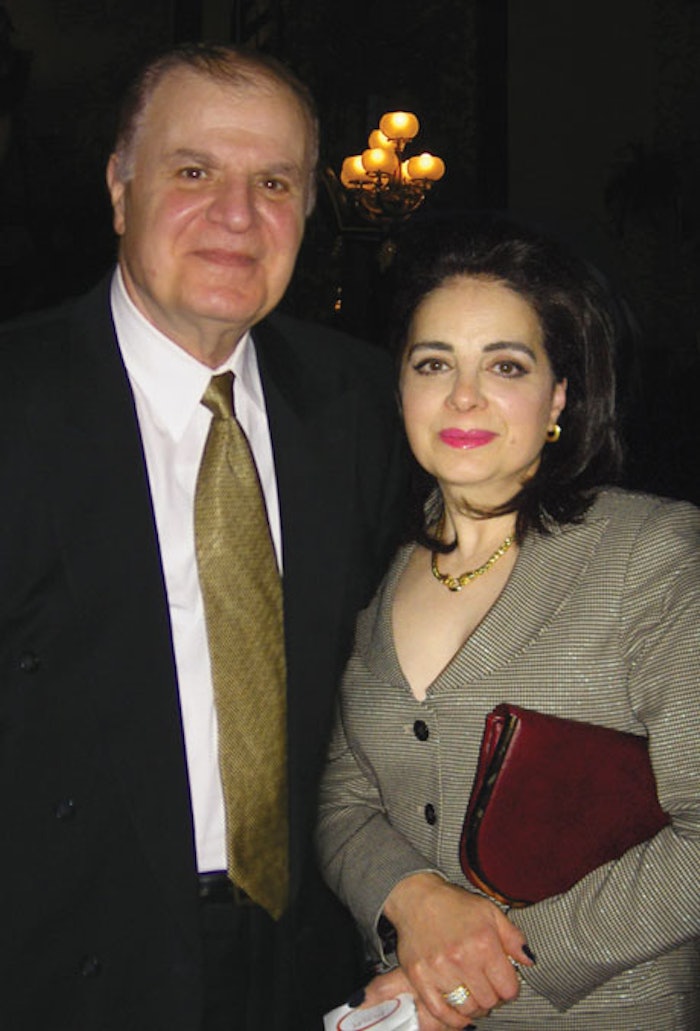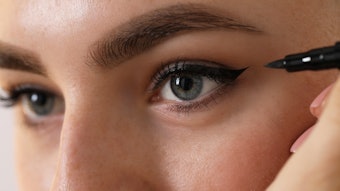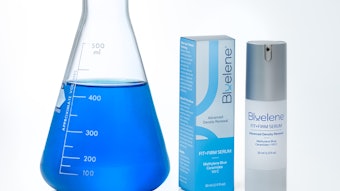
Innovation is a hallmark of the beauty industry, and it certainly takes a visionary to define a category and transform it completely with a new creation. Already in the forefront of the color cosmetic industry, Ike Sukljian, president and founder of Zela International, shifted nail polish into a new colorful direction with just one pioneering idea. Nearly half a century ago, he introduced never-before-seen colors that graced the fingertips of a whole new generation of women and sparked the imagination and admiration of celebrities and tastemakers alike. Ike is widely known to many on a first name basis, but for me, I have the distinct honor of calling him my father.
Raised in my father’s cosmetic manufacturing and marketing company Zela International, I can vividly recall one of my earliest childhood memories during the course of the summer of 1982, observing the sights and sounds on the factory floor, admiring the artistry in prototype sketches and eagerly taking on the role as my father’s “assistant.” Often growing restless in the office, I would venture out to where the action was—on the production floor.
I was captivated by the machinery filling, brushing and capping each glass bottle, but what struck me most was the kaleidoscope of colors that became more vibrant and fun with each run. The day began with sky blue, then pistachio green, then canary yellow... all buzzing and whizzing by before making its way to the next station. What started with just a simple glass bottle ended with a rainbow of candy colors, mesmerizing 3-D glitters, deep and daring vamps to the boldest black—each more eye-popping than the next. Let’s just say my polish collection that summer would make any woman green with envy.
Adding Some Shine
There was a time when nail polish was very limited in choice and unexceptional in color, a time it was nothing short of boring, especially when compared to today’s standards. So, how was it that such a dynamic industry as ours was once so very dull, and what changed? As an entrepreneur, already with businesses in retail and manufacturing, Ike cofounded his first cosmetic manufacturing and marketing company, Ardex, in Brooklyn in 1966, a time when there were only three other nail polish brands on the market: Revlon, Cutex and Dura-Gloss.
Ike explains, “At the time, the cosmetic industry as a whole was still in its infancy. The standard nail color was limited to between nine and 12 mundane shades of red, pink and peach—and that was it. That was the extent of what was available to women in the market.” But these also were the times of the counterculture—long hair, free love and experimentation. The 1960s were associated with rebellion against the conservative social norms of fashion and included the introduction of the mini-skirt and go-go boots, a stark contrast to the formalities of the 1950s. And while society and fashion were changing, the beauty industry largely remained stagnant and disconnected from the changing times.
“We developed more than 300 never-before-seen nail polish colors—from blues, browns, purples and greens to yellows, oranges, grays, silver and gold to black, white, glitters and everything in between,” says Ike. “All of our colors were created in-house, and I have not deviated from this practice to this day. At 69 cents a bottle, Ardex Nail Cosmetic was the most expensive brand on the market. The reaction from the retail buyers was skeptical; they were shocked by the colors and never believed they would sell. They never thought women would want to wear these colors, but they were stunned with the sales, and within three days at retail, the stores started ordering quadruple the quantities.”
With the largest selection of colors and finishes hitting the retail shelves in the U.S. (including creams, pearls, metallics, glitters and neons with equally unusual names like Village Brown, Worn Out Jeans, Toffee & Coffee, 3-D Wicked Silver and Black Magic), the nail polish color craze was officially born, exploding on the scene with full force.
Growing the Market
“You cannot dictate to women what colors they can and cannot wear. I never followed any color rules, and I never believed in limiting color options,” says Ike. This innate understanding helped represent what women wanted at the time his nail polish creations launched—freedom, independence and self-expression. The influence on fashion and Hollywood was evident as well—with Liza Minnelli lacquered in rich emerald green nail polish in the 1972 film Cabaret and Cher appeared with her ever-changing nail colors on The Sonny & Cher Comedy Hour.
Through the next decade, Ardex Nail Cosmetic was sold in variety retail chains from coast to coast—including F.W. Woolworth, McCrory Stores, J.W. Mays, Grant’s Department Stores, H.L. Green, S.H. Kress, J.J. Newberry’s, S.S. Kresge and Kmart. With its equally unique POP displays, Ardex was heavily promoted with multiple lazy Susans showcased on 12-foot tabletops covered with bottles as the main focal point at retail. And the company’s signature life-sized bottle used for signage set it apart in branding. Ardex’s standard plan-o-gram was marketed as “The 101,” as its everyday assortment of basic best-sellers boasted an impressive 101 colors.
As technology progressed, the early 1980s brought on packaging advancements, and Ike soon poured his nail polish formulas in to an exciting new technology: the nail polish pen. With a flow-through felt tip applicator, the Ardex Elegance Nail Cosmetic Pen provided women with a novel method to paint their nails. He also continued to expand Ardex with more nail polish lines, including Tips N Toes, Sleek ‘n’ Sassy, and Sleek.
Passing It Down
Although he’d already built an illustrious career, Ike was never one to rest on his laurels, and he founded Zela International (named after my mother) in 1986. This company’s first breakthrough product, The Makeup Palette, was a unique collection of fashion-forward makeup palettes that offered women customizable eye shadows, blushes, lip gloss, mascara, and eye and lip pencils. Mode Couleurs followed in 1989 with a line of color-coordinated nail, lip, face and eye products. The 90-plus SKU line married quality performance and rich pigments with affordable prices. And adamant about quality and the highest of standards, all of Ike’s companies and product lines were always and continue to be made in the U.S.
Through his long career, my father’s contributions have been vast and his insights invaluable. It is through what I observed as a young girl coupled with the knowledge passed down over the decades that intrinsically led my sister and I to create, like our father before us, a beauty company called Mode. The beauty business is in my blood, it is part of my heritage and family legacy, and we remain one of the oldest family-owned cosmetic houses in America. Through the years, the lessons I learned from my father continue to influence me. The hands-on approach to business that he taught me and the freedom he gave me—extending beyond the creative into all areas of business—are the things only a leader can provide. His reputation precedes him, and I have often seen first-hand how competitors and strangers alike in the industry grin from ear to ear when they meet my father, explaining they have heard of “Ike” and the mensch reputation he has. I continue to learn from him daily, as he is a walking encyclopedia of knowledge and experience; my personal professor, motivator, challenger, and, above all, my archetype of integrity and character.
The insatiable appetite for color remains today, and as consumers, we cannot imagine our lives without it. We relish in our beauty rituals, pampering ourselves with manicures and pedicures, reflecting our moods through nail colors and freely changing them on a whim. Lifting the veil off the dull and monotonous, Ike introduced the modern world to avant-garde colors he created almost 50 years ago—ones that remain popular today—causing an entire industry to shift and follow suit.
Cristina Samuels is an executive vice president at Zela International and co-creator of Mode Cosmetics. Mode’s pioneering concept of superior-performance, beneficial beauty continues the legacy of Zela’s 50-year heritage in cosmetic creation. She is also a member of the GCI editorial advisory board.










